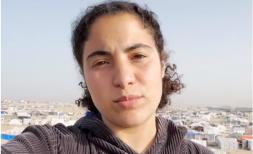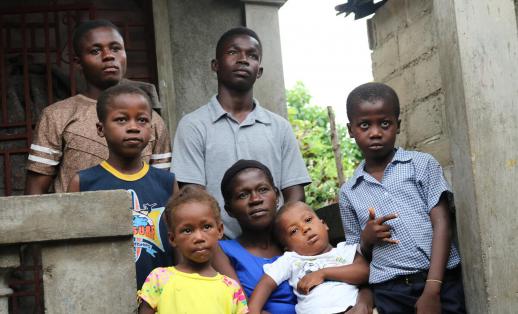What can we learn from campaigns run by the world’s children and young people?

Save the Children’s Patrick Watt reports back from some INGO soul searching on ‘Engaging a New Generation’
There’s nothing new about children and youth being involved in movements for change, from the anti-apartheid cause in South Africa, to the earlier and more hopeful chapters of the Arab Spring. But what feels different now is that young people are increasingly creating and leading campaigns themselves. Many of these campaigns are being pulled together very quickly, using digital channels, with limited resources and little formal governance. Usually this is being done by young people who may have little formal experience of campaigning, but maybe for that reason, are less jaded, and more willing to take risks.
There are open questions about how durable many of these campaigns are in terms of impact. Some movements emerge in response to a specific outrage, and can subside almost as quickly, once political and media attention moves on. Others lose momentum in the transition from mobilisation to organisation. For example, the March for Our Lives campaign for gun control didn’t secure its objectives in the US mid-terms in Florida (at the same time, the history of campaigning shows that you can lose battles but win the war, and March for Our Lives may well have all sorts of long-term indirect benefits in fostering civic engagement).
But what struck me most was that, of all the examples shared in the conference – from student-led road safety campaigning in Bangladesh, to Australian children campaigning against single use plastics – none was initiated, driven or significantly supported by traditional NGOs.

A group of us spent time at the conference discussing the searching questions such campaigns raise about how we’re approaching change, and working with children and young people to make it happen.
A few key themes came through:
Logos and egos – the widespread preoccupation with NGO brand and profile in campaigns can be a major turn-off for many child and youth campaigners. Big, brand-conscious NGOs find it especially hard to leave egos and logos at the door, but will increasingly struggle to be heard by young people unless they do so.
Agility – many of the most powerful child- and youth-led campaigns are fast and improvisational, testing different approaches as they go along, to see what works best. At least in their initial stages, they’re light on governance and decision-making, and are not shackled to a rigid strategy. In contrast, NGO campaigns tend to overestimate how much we’re in control of the agenda we’re seeking to influence. Big organisations tend to create slow and difficult decision-making, which can paralyse the campaigning muscle.
Support, incubate and release – it may be that organisations with revenues in the hundreds of millions and many thousands of staff cannot easily become agile, movement-based campaigners. But our advocacy-led campaigns can often be a powerful complement to grass roots activism, and we do have lots of skills, resources and connections that can be useful to child-led campaigns. One suggestion, from Change.org, was that all INGOs should create youth organisations, where they agree on the goals, give them some start-up resources, and then let go. Save the Children Norway has done something very like this, but such a bold approach is still the exception rather than the rule.

Campaigning with, and about people – many of the most effective child- and youth-led campaigns are led by people directly affected by the issues on which they’re campaigning: from movements to confront gender-based violence on Indian campuses, to Black Lives Matter in the US. This gives the campaigns integrity and authenticity. Campaigning rooted in personal experience can also have its own shortcomings, if single-issue campaigning becomes isolated from wider movements for justice. However, the ‘nothing about us without us’ mantra does challenge INGOs. Too often our campaigns (and programmes) have limited input from the people who are the focus of the desired change. Coalitions and partnerships are frequently an afterthought, rather than a starting point.
Many INGOs are mobilising adult campaigners in one place (usually wealthier countries) on issues affecting people in another (poorer, more marginal) place. Where they do engage children, it’s often easiest to do this amongst the educated, networked and mobile. Solidarity campaigning between people of relative privilege, and people who are more affected by an issue, has a valid place in the campaign ecosystem. But any campaign to achieve progressive change will only ring true if it models that change, by redistributing power and voice to those who currently have less of it.
Protection and voice – there’s a tension between the right of children to participate, and have a voice, and their right to be protected (by adults). The Syria conflict began with the torture and murder of a teenage boy who campaigned against the government. There are plenty of bad examples of children being exploited in campaigning movements, and exposed to personal risk, such as the recent sexual abuse scandal involving youth campaigning networks at the UN Organisations that support child-led campaigns need to provide political cover, stay the course, and ensure robust safeguarding systems where their staff are working with children.

Campaigning space in programmes – operational INGOs like Save the Children that run programmes around the world have the potential to engage many more young people through their programmes, than through their traditional campaign activities, with the added advantage that many of those young people are directly affected by the issues of the campaign. Community level engagement on issues like FGM, child marriage, and disability, which require deep social shifts, is often a critical complement to campaigns for legislative and policy change, and helps to foster a culture of rights and accountability at the local level.
The question for INGOs is less and less how we create campaigning waves, and more how we ride them. A growing demographic youth bulge in Africa, South Asia and the Middle East; a global expansion in secondary education; technological change; and rapid urbanisation all mean that child- and youth-led campaigning movements are likely to grow in diversity and influence. This is a campaigning future that should excite anyone who cares about economic, social and environmental justice.







